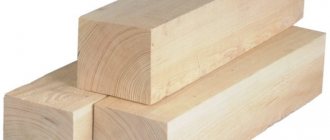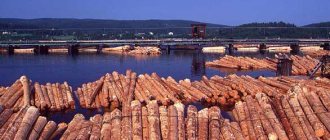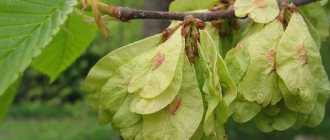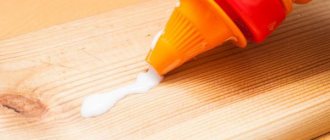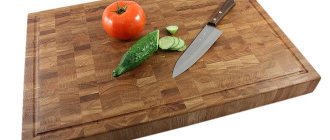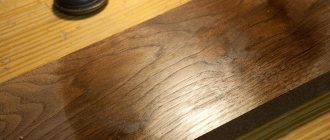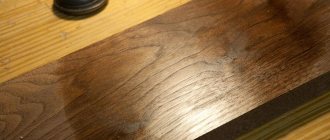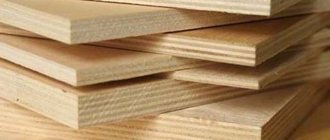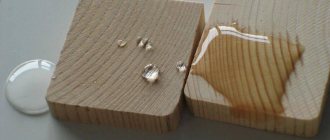What glue is used in the manufacture of laminated veneer lumber. The use of adhesives in furniture production.
- Features of choosing wood glue
- Classification of adhesives
- The best wood adhesives based on EDF resin
- Kleiberit 871.0
- Kleiberit 881.1
- Titebond III Ulimate 1416
- AKFIX PA370 D3
One type of joining wood parts is gluing. The advantage of this method of connection is the absence of drilled holes, metal fasteners, the “ennobled” appearance of the product, its “solidity”. The strength of the adhesive joint depends both on the type of glue used and on the quality of the surfaces being glued.
There are different requirements for adhesive compositions, since the areas of use and operating conditions of glued materials are different. Our review of top products will tell you about the properties of wood adhesives and selection rules.
Features of choosing wood glue
When purchasing, they take into account the chemical composition, purpose, temperature conditions of the gluing process and subsequent operation of the finished products, and a number of other quality parameters. Standard characteristics that experts pay attention to:
| Properties | Peculiarities |
| Moisture resistance (water resistance) | A property of an adhesive seam that determines the operating conditions of the glued product, taking into account the influence of running water, humid air, and condensation on it. |
| Biostability | Organic adhesives containing proteins and carbohydrates often become a breeding ground for fungi, bacteria, and insects that destroy the adhesive joint. |
| Heat resistance | The heat resistance of the adhesive joint will also determine the operating conditions of the finished products. This indicator indicates that the adhesive joint will maintain sufficient strength at high and low temperatures. Each type of adhesive has its own range of heat resistance. |
| Elasticity of the adhesive seam | This property is necessary when veneering plywood and facing slabs with materials with a higher coefficient of linear expansion. This reduces the risk of warping and gives the products strength. |
| Neutrality | When gluing, it is important that the glue does not change the color of the material. This happens when the glue is highly alkaline or acidic, as well as when there are tannins in the wood. |
| Environmental friendliness | The glue should not emit harmful substances both when working with it and during operation of the finished product. |
| Ease of use | In the best case, the glue should be immediately ready for use and should not require additional preparation operations for the glue itself and the surfaces to be bonded. |
There are no adhesives that meet all the requirements at the highest level, and manufacturers do not strive to produce them due to economic infeasibility. Therefore, each type of adhesive described below has both its advantages and disadvantages. When choosing wood glue, take into account the following parameters:
- operating conditions of the finished product: atmospheric conditions, exposure to moisture, load on the adhesive seam during operation;
- the nature of the materials being glued (including the degree of defects, resin content, wood species or type of wood material), their surface treatment before gluing;
- adhesive strength;
- time and conditions for applying and curing the glue, its “vitality”, complete drying time, open and closed exposure time;
- fluidity, viscosity, ease of application;
- environmentally friendly glue;
- the ability to connect dissimilar materials.
The rating of the best wood adhesives for wood is based on user opinions. He will help you choose products with the required technical characteristics, formula, and load on the glue line.
How to work with PVA wood glue
Each glue has its own specific rules of application. If we talk about PVA, then when using it you should adhere to the following recommendations:
- To apply the composition, it is best to use bast or bristle brushes.
- Before gluing, the material must be mixed well with a brush.
- If the surfaces are glued along the grain, it is enough to apply one layer of glue.
- When connecting the end elements, the mixture is distributed in two layers, and a second layer is applied after the first has dried.
- After application, the parts are tightly compressed and aligned relative to each other.
- Remains of excess glue are removed, and the surfaces are fixed until completely dry.
If you use high-quality PVA wood glue and adhere to the specified rules, you can achieve reliable gluing of wooden surfaces with a guarantee of their connection for many years.
Classification of adhesives
The conditions of use depend on the water resistance class. The European standard EN 204 specifies requirements for classes D1-D4, which determine the standard strength of the adhesive joint when exposed to high humidity. Before being released onto the market, adhesives are tested in accordance with the EN 205 standard, and labels are obtained based on the research protocols. There are 4 classes in total:
- D1 is used for joining wooden parts with a humidity not exceeding 12% and subsequent operation of the finished products only indoors with normal air humidity;
- D2 is recommended for use in cases where the moisture content of glued wooden structures during operation will not rise above 18%. These may be areas that are briefly exposed to condensation or flowing water;
- D3, with higher resistance to short-term wetness, is suitable for the manufacture of any glued products intended for indoor use;
- D4 is used for the manufacture of structures that will be exposed to long-term exposure to water or high humidity. Such products can also be used outdoors, provided that the surface of the adhesive joint is well protected.
Most wood glues meet the requirements of class D1.
How to glue wood to wood
What glue to use to glue wooden parts to each other depends on several factors:
- wood species, wood colors;
- where the glued structure will be permanently located;
- what impact will be exposed to;
- size of parts and surfaces to be glued;
- what load the adhesive joint must withstand.
Also important are the cost of the glue, its consumption, whether it needs to be prepared and for how long, the speed of drying and hardening. Knowing all these parameters, an experienced craftsman can easily determine which glue is best suited for this product, parts or structure.
The best resin-based wood adhesives
Quality requirements oblige companies to produce adhesive materials with universal formulas for gluing dissimilar surfaces. Thermosetting compositions based on epoxy resin are produced by polymerization and polycondensation. Multicomponent compounds include: plasticizers, powdered substances, glass and carbon fibers, fillers and hardeners. Characteristics:
- good heat resistance – up to +250°C,
- frost resistance – up to -20°С,
- tightness of the adhesive seam,
- resistance to petroleum products and other aggressive liquids,
- preserving the color of the wood.
Flaws:
- The adhesive seam is noticeable under the stain, but not visible under film coatings.
- It is difficult to calculate the proportions when combining with a hardener, which leads to overconsumption.
EDP
A two-component fast-curing compound without solid particles and volatile impurities is used for gluing different materials in the manufacture and repair of furniture, and construction work. To seal cracks in wood, combine it with wood flour or fine sawdust. Fillers thicken and absorb moisture, forming a monolithic structure. When working with loose wood, mix with chalk and metal powder to close the pores. After setting, you can carry out work without waiting for final drying.
Advantages:
- curing at any temperature,
- mechanical stability,
- good electrical insulating properties,
- small shrinkage,
- water and oil resistance,
- zero water absorption.
Flaws:
- the need to maintain precise proportions,
- overspending,
- toxicity.
Kleiberit 871.0
Two-component water-soluble urea glue for veneer with the possibility of hot pressing. The composition dissolves well, retains its properties for a long time after opening the package, and is easy to use. Kleiberit 871 adhesive is suitable for gluing natural wood veneer to regular and non-flammable boards and other wood substrates. The composition of the mixture is balanced and does not require the introduction of additional components. To get started, dissolve the powder in water in the indicated proportions.
Advantages:
- uncured glue is easily washed off with water,
- forms a strong connection,
- adhesion to plastic,
- does not leak through seams,
- long open time.
Flaws:
- storage only at positive temperatures,
- limited viability of the prepared adhesive solution (from 3 to 8 hours),
- the likelihood of technological errors when veneering with birch veneer.
Kleiberit 881.1
Powdery composition on a melamine-urea-formaldehyde basis. Glue with increased water resistance is used for pressing plywood and veneer at temperatures from +90 °C. They are used in the cladding of entrance and interior doors, in the production of moisture-resistant particle boards and other products for use indoors and outdoors.
Advantages:
- simple preparation and use,
- high quality adhesive joints,
- adding a hardener in liquid form,
- no penetration of glue during pressing,
- long open time,
- good vitality,
- fast setting when heated.
Flaws:
- the need to mix 4 components in the specified proportions,
- high requirements for compliance with process parameters,
- limited viability of the mixture (from 1.5 to 5 hours).
What types are there?
Wood adhesive compositions based on polyurethane, organic resins and PVA have gained great popularity and love among consumers.
Polyurethane
Characterized by versatility in use. The hardening process occurs due to a chemical reaction, which consists of contact of the adhesive composition with a hardener or moisture. During the process, carbon dioxide is released, which promotes foaming of the mass and the formation of a film. The composition also uses resins, stabilizers, viscosity regulators and crystallization accelerators.
They have a high level of adhesion to both porous and smooth substrates. Suitable for working with artificial and natural surfaces (cardboard, stone, metal, fabric, wood, ceramics, gravel, rubber, polystyrene, glass and others).
The glue is resistant to low and high temperature changes (operation is possible in the temperature range from -40 to +120 degrees), and is not affected by aggressive substances such as oils, acids, and gasoline. The connection is durable, tight and durable.
Mixtures are divided into one-component and two-component. One-component ones in the form of a ready-made mixture are universal, suitable for gluing different materials. Polymerization occurs due to moisture or water. Further chemical reaction helps to increase the volume of the glue.
Working with a two-component product involves combining two components contained in the package. A prerequisite is 100% compliance with the instructions. This type of mixture is also suitable for gluing different surfaces.
Based on organic resins
The mixtures are highly resistant to moisture, aggressive substances and petroleum products. Versatility allows you to glue different types of surfaces, forming a strong and elastic seam. The most popular product is epoxy resin adhesives.
Based on PVA
The basis is a water emulsion of polyvinyl acetate. Often, adhesive mixtures are added to the compositions to improve strength, stabilizers for a longer shelf life, and plasticizers for better elasticity. Absorption into wood pores and evaporation of water ensure that the material dries quickly.
The glue is elastic and homogeneous and becomes transparent when dry. Depending on the temperature and thickness of the layer, drying time is about 24 hours. The advantage is the absolute absence of toxicity. Therefore, PVA can be used both indoors and for outdoor work. The disadvantage of the product is the gradual decrease in the reliability of gluing in places with excess moisture.
Like polyurethane adhesives, PVA is divided into one-component and two-component. To bond materials with a two-component adhesive, you must mix the base and hardener. To obtain a high-quality composition, be sure to strictly follow the instructions. It is important that the preparation of the composition should take place immediately before gluing. The one-component adhesive is immediately ready for use.
The best adhesives for wood based on PVA
For gluing wood, adhesives based on polyvinyl acetate dispersion are traditionally used, which is an aqueous dispersion of a polymer (polyvinyl acetate) with the addition of a plasticizer and modifying additives to improve adhesion, moisture resistance, and heat resistance.
After drying, polyvinyl acetate glue forms an elastic adhesive seam. PVA adhesives are also used in construction and the production of paints and varnishes.
Advantages:
- have high penetrating ability, good adhesion to wood materials,
- environmentally friendly,
- the adhesive seam is oil and petrol resistant,
- economical, average consumption – 100-200 g/m2,
- fire and explosion proof.
Flaws:
- relatively low water resistance,
- ability to dissolve in ketones, esters and organic acids.
Titebond III Ulimate 1416
One-component wood adhesive based on improved polyvinyl acetate dispersion. In terms of moisture resistance, it meets the requirements of class D4. Designed for heavy-duty joining of different types of wood, boards, plywood, postforming, and laminated plastics. Used for gluing natural veneer onto plywood and particle boards. Suitable for outdoor use. It sets quickly and forms a strong seam that can be sanded with abrasives and drilled.
Advantages:
- Possibility of cleaning with water,
- high strength,
- long open time,
- fast initial setting,
- aging resistance,
- low electrical conductivity,
- no expansion during curing.
Flaws:
- Not suitable for the manufacture of load-bearing structures.
- Storage temperature restrictions.
Tytan Professional WB 33 D3
Moisture-resistant wood glue is suitable for gluing solid boards and plywood. Furniture makers use hard and exotic types of wood to connect elements. Effective for fixing tongue-and-groove joints when laying boards and veneering slabs.
Advantages:
- resistant to humidity, moisture resistance class D3,
- has high tensile strength (shear),
- forms an elastic solid seam.
Flaws:
- no technological shortcomings were found within class D3 of polyvinyl acetate adhesives,
- High price.
Rakoll ECO-4
Moisture-resistant, low-viscosity PVA adhesive for wood, corresponds to class D4 according to DIN EN 204. Used for cabinet and assembly gluing: timber with a moisture content of 8-10%, rafter systems. Suitable for veneering laminated plastics and chipboard edges. The setting speed depends on environmental conditions, hygroscopicity, thickness of the applied layer, and internal tension of the wood. Average setting time – 12 minutes. Open holding period – 8 minutes. Consumption – 150-180 g/m². Optimal moisture resistance is achieved after a week.
Advantages:
- does not change the color of the wood,
- suitable for emergency repairs,
- forms a transparent plastic seam,
Flaws:
- Tannins and tannic acids can cause the glue line to darken on beech, cherry, oak and ash. Test bonding is recommended.
- Has an acidic pH.
Krass PVA D3
The glue is ideal for joining wood of any moisture content. Suitable for gluing lumber, furniture, timber, balustrades, plywood, veneer, parquet. Do not use at temperatures below +8°C. For cold gluing, leave for 5 minutes, then keep under pressure for 15 minutes. With the hot method, the parts are pressed for only 2 minutes. Consumption – 130-140 g/m².
Advantages:
- forms a transparent elastic seam,
- environmentally friendly,
- heat-resistant – can withstand temperatures up to +100°C.
Flaws:
- Relatively long curing time for the glue (according to consumer reviews).
Varieties
There are about 25 types of wood glue, which are produced in series:
- Original Wood Glue 5064 473 ml usually comes in a red bottle. It is used for working with musical instruments, as it does not affect the sound due to its solid consistency. Suitable for both wind and string instruments.
- Titebond II Premium 5004 is a one-component, moisture-resistant adhesive, available in blue packaging, with fast setting, solvent resistance and a short cure time. The finished seam of Titebond 2 glue is elastic. Typically this variety is used to make benches, garden furniture, and mailboxes. The non-toxic composition allows it to be used to repair various household items, even those that have indirect contact with food.
- Titebond 3 is a product available in green packaging that is particularly durable and water resistant. It is suitable for gluing items that have direct contact with food. There are no toxins or solvents in the composition; only safe polymers are used as a basis. Titebond 3 adhesive can even be used for gluing items that will be used in sub-zero temperatures. You can work with this composition by cold or hot gluing. The basis of the glue is a water-dispersion mixture, which makes the composition universal. Using glue you can glue not only wood, but also plastic and other materials. Consumption is 190 g/m². Polymerization times vary between 10-20 minutes.
- Heavy Duty is a very strong compound that is suitable for bonding concrete, brick, fiberglass, ceramics, stone and even hardboard. A high degree of adhesion is ensured by the synthetic rubber included in the composition. With this glue you can work even with wet and frozen wood. The frozen seam has good elasticity, due to which it is not afraid of vibration and mechanical influences.
The best polyurethane adhesives for wood
Polyurethane adhesives consist almost entirely of synthetic resins. Additionally include: solvents, curing catalysts, viscosity regulators, fillers. The curing principle of this glue is based on the interaction of the composition with water vapor. When curing, the glue releases carbon dioxide, which leads to an increase in the thickness of the adhesive seam. After curing, the adhesive joints are sanded and painted. When laying flooring, the adhesive composition ensures strong fastening of the laminate to the concrete screed and blocks the swelling of parquet blocks at high humidity. Do not use for polypropylene, polyethylene, oily surfaces. Open exposure lasts 18 minutes. Completely cures within 24 hours.
Advantages:
- indispensable when creating outdoor furniture,
- capable of curing in high humidity,
- glues damp and antiseptic-treated wood and veneer without warping.
Flaws:
- flammability.
AKFIX PA370 D3
Medium viscosity wood glue sets in 10 seconds. Glues wood with a rough surface, glass, plastic and other textures. According to the DIN EN 204 system, the adhesive is classified as class D3, which expands the possibilities of application in the interior and exterior. Used for all types of carpentry and construction work. After final drying, the seam increases in volume and becomes stronger. Curing conditions: up to 10 min. at a temperature of +22°C, compression time – 12 minutes.
Advantages:
- retains properties over a wide temperature range,
- economical,
- inert to aggressive environments,
- vibration resistant,
- faint smell.
Flaws:
- high coefficient of specific expansion,
- high price.
Kleiberit 501.0
Moisture-resistant one-component adhesive for gluing wood with force-locking is created for the assembly connection of wooden parts with a humidity of 8-10% at a temperature of +18-20° C. Suitable for connecting laminated boards, mineral building materials, and rigid foam plastics. Holding time – 18 minutes, pressing – 1 hour. Super strength is achieved within a day. Consumption – 100-200 g/m2 depending on the porosity of the surfaces.
Advantages:
- high strength and heat resistance of the seam according to WATT 91 standards,
- resistance to water and solvents,
- weather resistance.
Flaws:
- unpleasant odor;
- long setting;
- low foaming at a temperature of + 10°C, reduces the strength of the adhesive joint.
CERESIT R 710
Glue with high adhesion to wood, rubber, polystyrene, concrete and other surfaces, used for all carpentry work. The two-component system is effective for installing raised floors with cable ducts, attaching supporting structures to the base, laying industrial and sports surfaces with high loads, and heated floors. Suitable for outdoor use at average temperatures and humidity levels. Glue consumption – 0.3-1.2 kg/m2.
Advantages:
- wide range of applications,
- dense filling of gaps,
- optimal moisture resistance, vapor permeability, frost and weather resistance,
- environmental Safety.
Flaws:
- high price,
- limited viability.
SOUDAL 66-A D4
Super waterproof liquid adhesive of class D4 is distinguished by its high bonding strength even on wet wood, which expands its areas of use. Indispensable in the manufacture of furniture, stairs, gazebos, and any wooden structures. In industry they are used to connect multilayer slabs, shelving, and insulating materials. When cured, it foams, penetrates the structure and seals the pores. Hardens under pressure in 3 hours.
Advantages:
- resistance to atmospheric aggression,
- fast setting,
- perfect adhesion,
- retains properties in the temperature range -30…+100°C.
Flaws:
- high linear expansion,
- unpleasant smell,
- overpriced.
Technical characteristics of PVA
The main characteristics include:
- Low consumption. Depending on the scope of application, consumption can vary from 100 to 900 g. per sq.m.
- High adhesion. Often, water-based PVA glue is not inferior to its alcohol-containing counterparts.
- Fire and explosion safety. But it should be noted that PVA dispersion, on the contrary, is explosive due to the release of acetic acid and vinyl acetate into the air.
- Frost resistance, more than 4 cycles. However, the dispersion itself is less resistant to frost and, when frozen, loses its adhesive ability.
- Minimal shrinkage during hardening.
- Environmentally friendly due to the absence of harmful chemicals.
- Moisture resistance
Glue laminate joints
To the technical characteristics you can also add the low cost of the composition, which means accessibility to consumers. The glue is non-toxic and can be used in many areas, even in children's production and everyday life. Perhaps this is the most versatile and popular glue with a wide range of applications, and most often it can be found in a student’s pencil case.
Industrial adhesives Umacoll
Manufacturer of adhesive materials Polimersbyt produces industrial moisture-resistant aqueous polyvinyl acetate adhesives
using German technologies. In the line: Umacoll 33D, 37D, 39D, 21D and other modified polyvinyl acetates, not inferior to European products in quality. The adhesives are suitable for cold and hot gluing:
- all types of solid wood products with a humidity of 8-12%,
- MDF and chipboards,
- furniture making,
- gluing door panels, tongue-and-groove and tongue-and-groove structures in a log house,
- veneering
Operating temperature: from +16°C, optimal: (20±2)°C, atmospheric humidity: 65%. At low temperatures, the pressing time is increased. Open exposure up to 8 minutes.
Advantages:
- neutral pH,
- form transparent seams with high mechanical shear strength,
- do not react with tannins from wood,
- provide moisture resistance class of the adhesive joint D2-D4 (depending on the type of glue),
- have optimally selected physical and mechanical characteristics that ensure ease of use.
Disadvantages: none found.
In addition, the range of wood adhesives includes the Umacoll 552/024 EPI system.
A variety of product types allows you to choose products with the required technical parameters.
For the production of laminated veneer lumber
choose Umacoll 552/024, for the manufacture of window blocks, formwork, countertops, furniture panels, gluing veneer to MDF and chipboard - Umacoll 37D, 39D, 33D.
For 3D multiforming
, polyurethane adhesives are suitable for thermal cladding of relief panels made of lumber: Umacoll 81M, 83M, 85M, 87M, 834M. Thermal resistance of the adhesive joint, depending on the brand: from +75°C to 110°C.
For laminating wooden surfaces with films and plastic
Suitable for Umacoll 80K.
Which wood glue is best to choose?
All compositions are of high quality, withstand high mechanical loads, and are not subject to aging. Synthetic resins degrade along with the wood. For emergency repairs, sealing cracks, decorating ends, and working in rooms with high humidity, quick-drying epoxy and polyurethane are suitable. They are suitable for making garden furniture, building gazebos, and landscaping.
Moisture-resistant dispersions of classes D3 and D4 are ideal for making furniture, laying floors, and covering surfaces. For gluing light wood, colorless glues that do not react with tannins are suitable. When joining parts, you can count on the strength of fast-setting polyurethane adhesives. They are suitable for ceramic cladding in buildings with high humidity, facades and surfaces subject to vibration.
In order not to worry about quality, experts recommend buying adhesive compositions and dispersions from well-known manufacturers.
Products from Russian companies are no worse in quality than European ones and are significantly lower in price. By following the manufacturer's recommendations, it is not difficult to obtain the expected result. All articles

